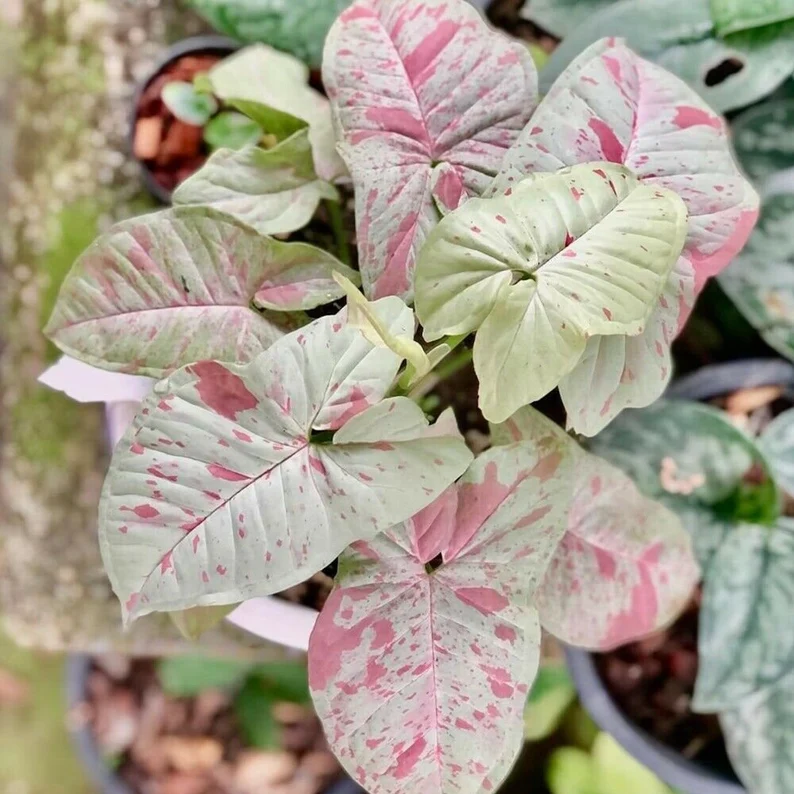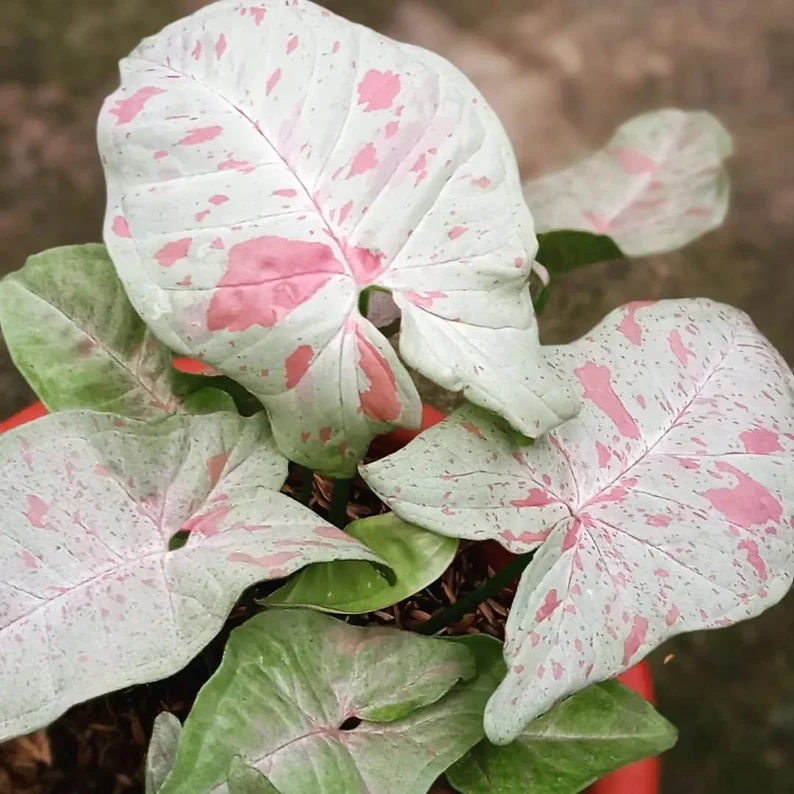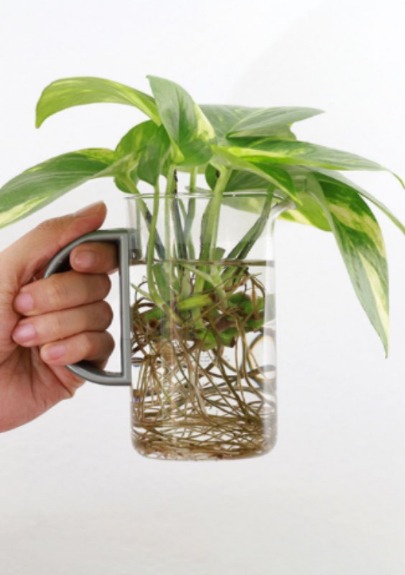
Milk Confetti Syngonium
Milk Confetti
The rare Milk Confetti Syngonium plant is a unique and beautiful houseplant that has become increasingly popular among plant enthusiasts. This plant is a wonderful addition to any collection, and it is especially sought after for its striking foliage.
The Syngonium plant is a member of the Araceae family, and it is native to Central and South America. It is also known as the Arrowhead plant, due to the shape of its leaves. The leaves of this plant are typically a glossy green color, but the Milk Confetti variety boasts a beautiful mix of green and white speckles that create a stunning confetti-like effect.
One of the most appealing aspects of the plant is its easy care requirements. This plant thrives in bright, indirect light and prefers to be kept moist but not overly watered. It is also highly adaptable and can tolerate a range of temperatures and humidity levels.
In addition to being a low-maintenance plant, the Milk Confetti Syngonium also has air-purifying qualities. Like many other houseplants, it can help to remove harmful toxins from the air, making it a great choice for anyone looking to improve their indoor air quality.
If you are considering adding a Milk Confetti Syngonium plant to your collection, there are a few things to keep in mind. Firstly, this plant is not widely available, so it may be difficult to find at your local nursery or garden center. However, it is possible to purchase online from specialty plant retailers.
Another thing to consider is the size of the plant. The Milk Confetti Syngonium is a relatively slow grower, but it can eventually reach up to three feet in height if given the proper conditions. It is important to keep this in mind when deciding where to place your plant.
Care Guide
- Light: Syngoniums prefer bright, indirect light. They can tolerate lower light conditions but may not exhibit their best growth or leaf coloration.
- Watering: Keep the soil consistently moist but not waterlogged. Allow the top inch of soil to dry out between waterings. Avoid overwatering, as it can lead to root rot.
- Humidity: Syngoniums appreciate higher humidity levels. You can increase humidity by misting the leaves regularly or placing the plant on a tray filled with pebbles and water. Grouping plants together can also create a microclimate with increased humidity.
- Temperature: They thrive in average room temperatures between 60-75°F (15-24°C). Avoid exposing them to cold drafts or extreme temperature fluctuations.
- Soil: Use a well-draining potting mix that retains moisture but doesn’t become waterlogged. Adding organic matter or perlite can help improve drainage.
- Fertilizer: Feed your Syngonium with a balanced houseplant fertilizer every 4-6 weeks during the growing season (spring and summer). Follow the instructions on the fertilizer package for dosage and frequency.
- Pruning: Prune your Syngonium to maintain its shape and encourage bushier growth. You can also trim off any leggy or yellowing stems. Wear gloves when pruning as the sap of Syngoniums can be mildly irritating to the skin.
- Propagation: Syngoniums can be propagated through stem cuttings. Take a cutting with a few leaves and place it in water or a well-draining potting mix. Keep it in a warm and humid environment until it develops roots.





